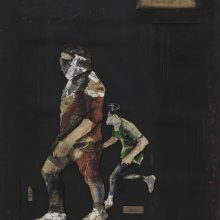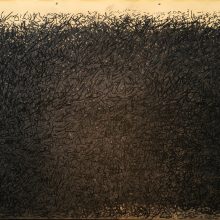I Will Return
Mojtaba Amini
The title of the exhibition, “I Will Return,” is inspired by the protests of Palestinians in the Gaza Strip and its subsequent trending hashtag on Twitter in 2018. The Twitterstorm intensified as Israeli forces killed the Palestinian Gaza-based artist, Mohammed Abu Amr. He sculpted the words such as “I Will Return,” “They Shall Return,” “The Steadfast,” “Freedom” on the Gaza beach. He sculpted the names of Palestinian martyrs as well. Using the language of art and with a documentary approach, he wanted the world to know about the ongoing events in Palestine. He was shot dead only a day after sculpting the words “I Will Return” on the sands of Gaza Sea, while he was returning from a peaceful protest known as the “Great Return March,” which coincided with the Palestinian “Land Day.”
Squares are interstitial spaces in cities. They are places for celebrations as well as scenes of conflict, generating their own unique aesthetics. Squares were among the first solutions for socializing and congregating, which turned out to be the last for demanding justice. In this exhibition, Mojtaba Amini considers the convoluted relation between space, media, and making meaning through assemblage techniques and collages that are made of layers of papers and images. He selects countless images published on the internet after significant events, takes them out of their original context, i.e., the city, and puts them together piece by piece and layer by layer in different sizes.
In this series of works, for which he has chosen the title “I Will Return,” Amini has peeked into streets of different cities around the world and online networks that work as strongholds and visual exhibitions of suppressed protests, picking out subject matters that are reduced to mere numbers and statistics by the media. These flaky bodies are set on the coarse surface of sandpaper, which is reminiscent of the asphalt that typically covers the cities. Mojtaba Amini’s work oscillate between illustration, volume, painting, and installation. After visualizing urban interactions and confrontations (in “Talqin,” “Xabt,” and “Tear in Town” Series) and considering the lives of manual workers (in the “Shadow” series), the notion of “going back” is his main concern here.




















